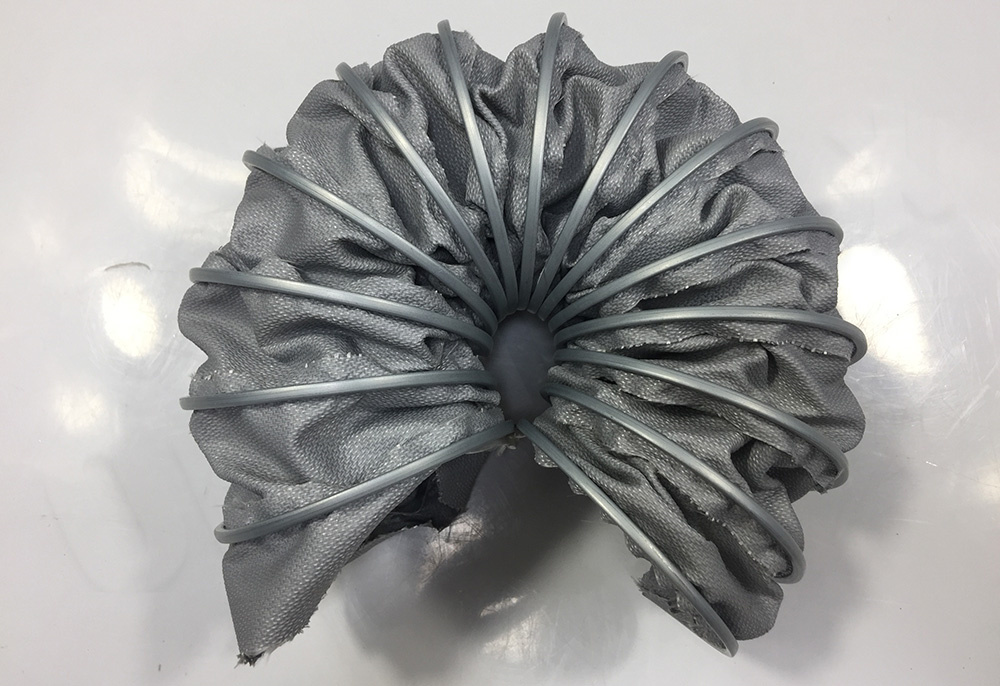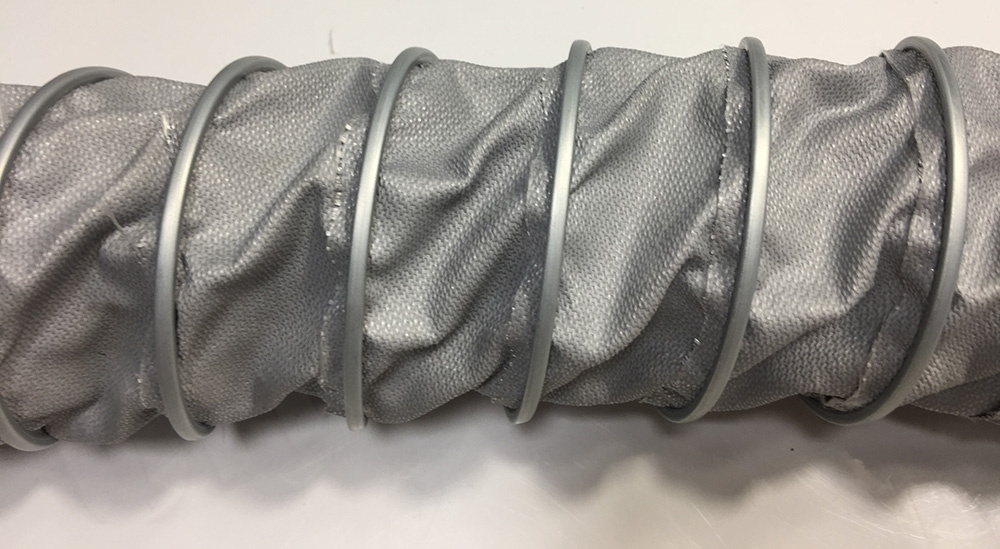High-temperature duct hoses are flexible air ducts designed to resist extreme heat. These hoses are constructed with a base material of glass fiber cloth, which is then coated evenly with silicone rubber. This silicone coating not only ensures excellent airtightness but also protects against the erosion of water, steam, and chemical solvents. Additionally, the silicone cloth’s high tear strength guards the surface against sharp objects and cuts.
High-Temperature Flexible Telescopic Ducts
The reinforcement of these ducts comes from steel rings on their surface. The pressure capacity of the duct depends on the thickness and density of these steel rings: thicker rings with closer spacing increase pressure resistance, while thinner rings with wider gaps reduce it. High-temperature ducts capable of withstanding 400°C are popular in the market, but quality varies significantly. Some suppliers cut costs by increasing the spacing between steel rings, selling substandard hoses as premium products.
Consequently, low-cost high-temperature ducts often fail within hours of use. Their steel rings may detach, leading users to blame manufacturers for poor quality. However, this issue typically stems from inadequate pressure resistance caused by improper steel ring spacing—a common problem in low-grade ducts.
What Causes Duct Hose Bursting?
Bursting usually results from excessive pressure. When steel rings are spaced too far apart, the duct cannot handle the required pressure, leading to cracks. To avoid this, determine the working pressure of your system first. Then, select a duct hose with appropriately spaced steel rings to match that pressure.
This revised version uses active voice, adds transitional words (e.g., additionally, consequently), and shortens sentences for clarity.








